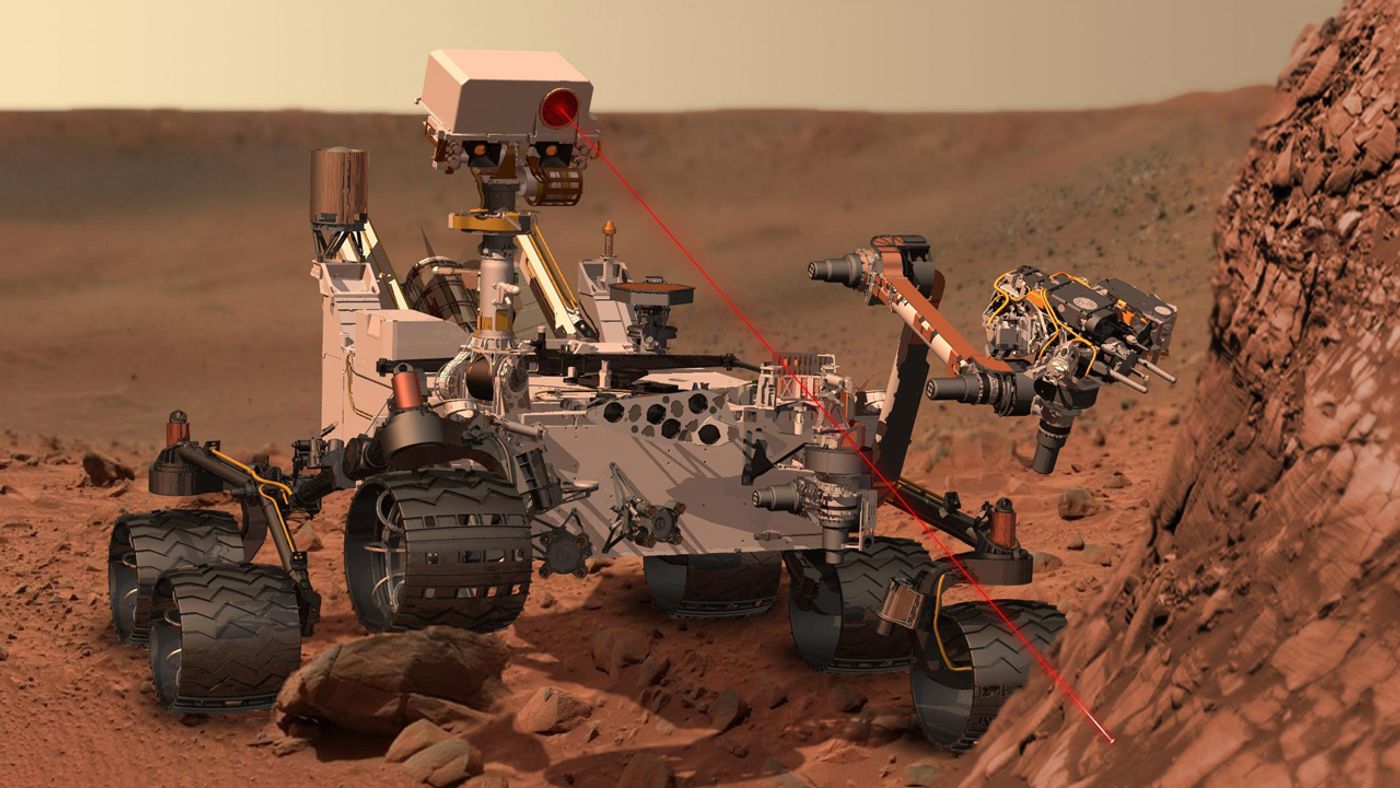This Martian Crater Could Have Been Habitable for Over 700 Million Years
Of all the planets orbiting the Sun, perhaps Mars is one of the most interesting. Not only is it more like Earth than any other planet in the Solar System, but its close proximity has made it possible to explore the red planet up close with rovers. Curiosity is the most recent rover mission to partake in exploring Mars; rolling around on its surface ever since it landed there in 2012.
One of the places Curiosity has been responsible for exploring is the Gale crater, which has a unique composition that NASA believes could paint a detailed picture about the red planet’s cloudy past; and indeed it has…
Image Credit: NASA
Two new studies – one published in the journal Geophysical Research Letters and the other published in Science – suggest that not only did the Gale Crater once have water in it and the potential for being habitable by microbial life, but it remained this way for much longer than we previously believed. The conclusion was reached by studying the chemical composition of sediments at different levels within the crater with Curiosity’s onboard instruments.
Related: Curiosity takes a selfie after drilling at Buckskin
The crater was once filled with surface water, but as the surface began to crack, that water then seeped into the cracks. As the water receded, it left behind several layers of sediment with different compositions, which depended on how long they were exposed to the air and ultraviolet radiation from the Sun. These factors impact the chemical composition of the rocky layers, and so we can use them to determine the conditions.
The team looked for ratios of aluminum to calcium and sodium to find out what conditions the rocks were exposed to. These ratios can tell us whether the rock was exposed during a cooler or warmer climate, and for how long. Notably, layers at the top of the crater revealed hints of a cooler climate, while those near the bottom revealed hints of a warmer climate; this sequence pointed to Mars being much colder in the beginning and slowly warming up and drying out over time.
During this time window of climate change on Mars, estimated to have occurred between 3.8 and 3.1 billion years ago, scientists believe the planet had the potential to be habitable. This 700-million-year gap is longer than any previously-estimated window of habitation on Mars yet. Worthy of note, these timeframes seem to correlate with the beginning of life on Earth.
Related: Check out these dust devils that were spotted on Mars' surface by Curiosity
Complete with not only water, a range of climate over a long period of time, and a smorgasbord of chemical compounds, scientists now think that Mars was once very Earth-like with habitable conditions and that the red planet tells a story about what happens when a planet’s habitability is slowly stripped away.
“I don’t think we expected that we would be able to understand this much detail about the chemical conditions in the lake that existed 3.5 billion years ago. This was actually a very Earth-like environment,” study co-author Joel Hurowitz from Stony Brook University explained.
While Curiosity has helped find the spots of the planet that may have once been potentially habitable, the Mars 2020 mission, scheduled to launch in the future, should help find actual traces of life. After all, all life forms leave behind some kind of trace evidence that’s just waiting to be sniffed out. There's still some debate about where it should land, but any of the possible landing sites are sure to offer a treasure trove of information that we need to tell Mars' hidden story.
Related: Curiosity is getting old as its wheels begin to break down
It should be interesting to see what all this advanced exploration technology can do given the time we’ve spent hand-picking the best places to explore for signs of life and developing the proper equipment to find what we’ve been looking for.
Source: Ars Technica









